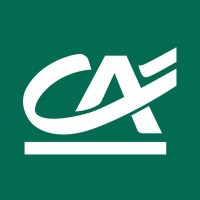
Groupe Crédit Agricole
The Crédit Agricole group is the leading partner of the French economy and one of the largest banking groups in Europe. It is the leading retail bank in Europe as well as the first European asset manager, the first bancassurer in Europe and the third European player in project finance. Built on its strong cooperative and mutual roots, its 157,000 employees and the 27,423 directors of its Local and Regional Banks, the Crédit Agricole group is a responsible and responsive bank serving 54 million customers and 12,1 million mutual shareholders. Thanks to its universal customer-focused retail banking model – based on the cooperation between its retail banks and their r elated business lines –, the Crédit Agricole group supports its customers’ projects in France and around the world: day-to-day banking, home loans, consumer finance, savings, insurances, asset management, real estate, leasing and factoring, and corporate and investment banking. Crédit Agricole also stands out for its dynamic, innovative corporate social responsibility policy, for the benefit of the economy. This policy is based on a pragmatic approach which permeates across the Group and engages each employee.






